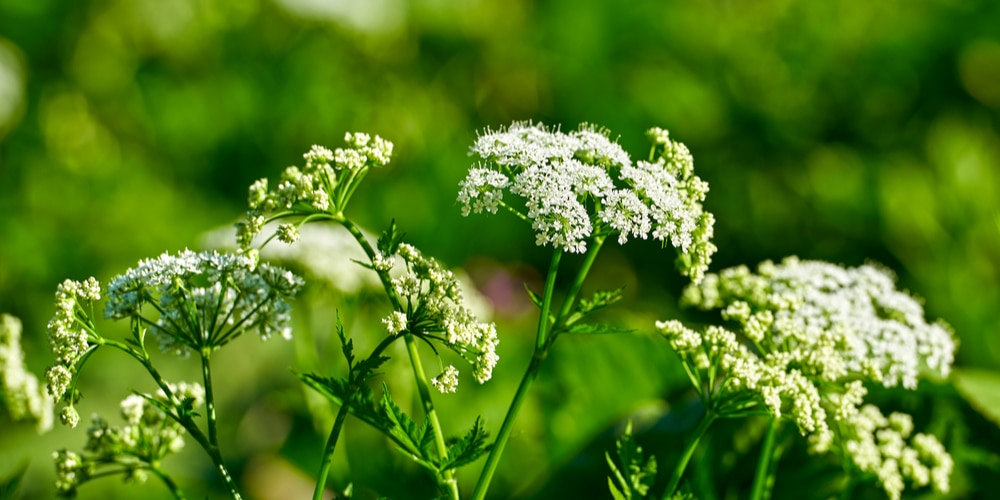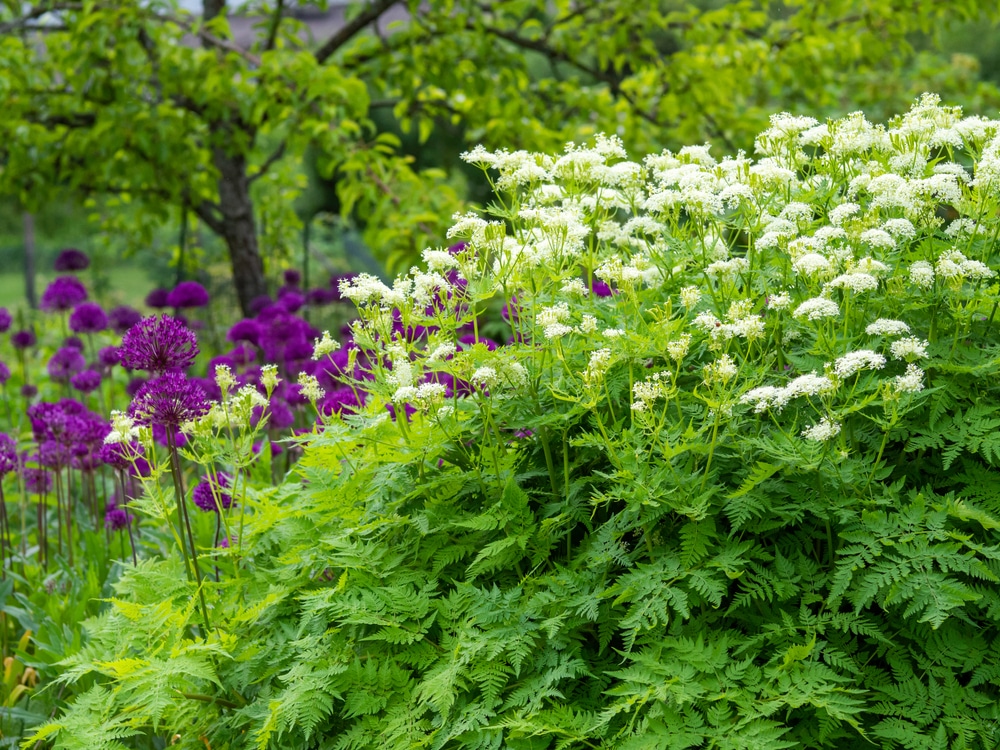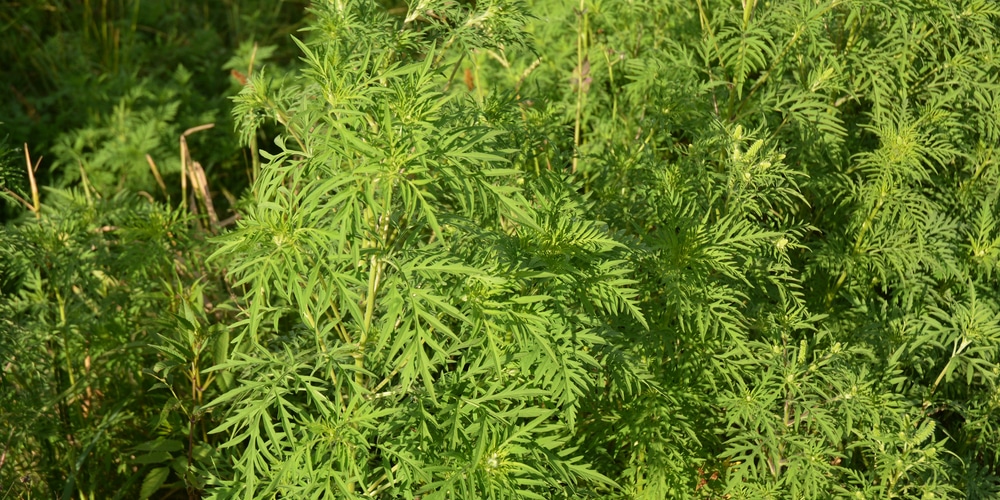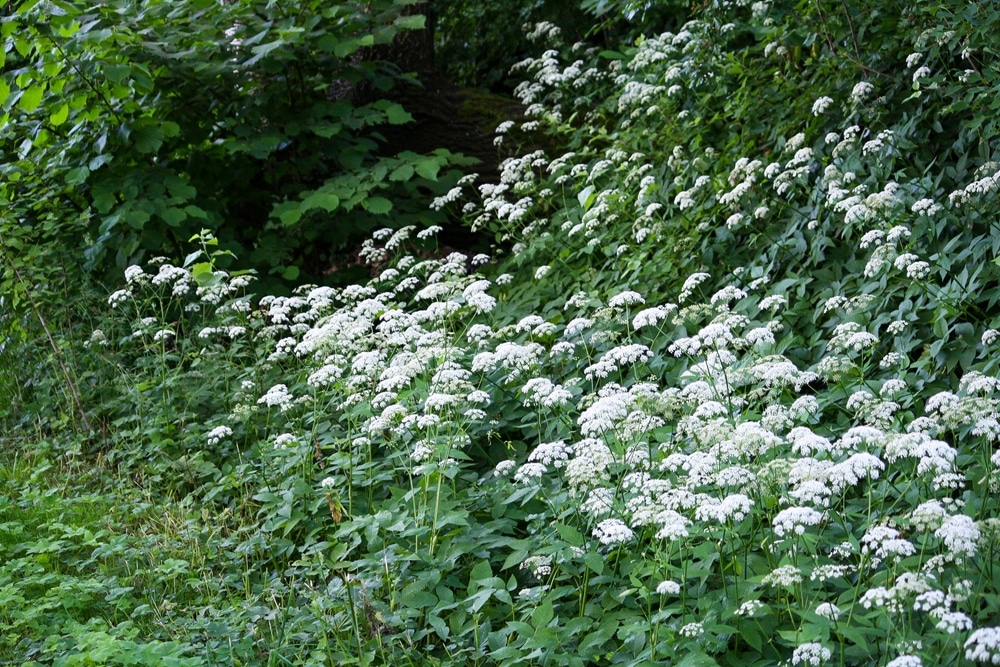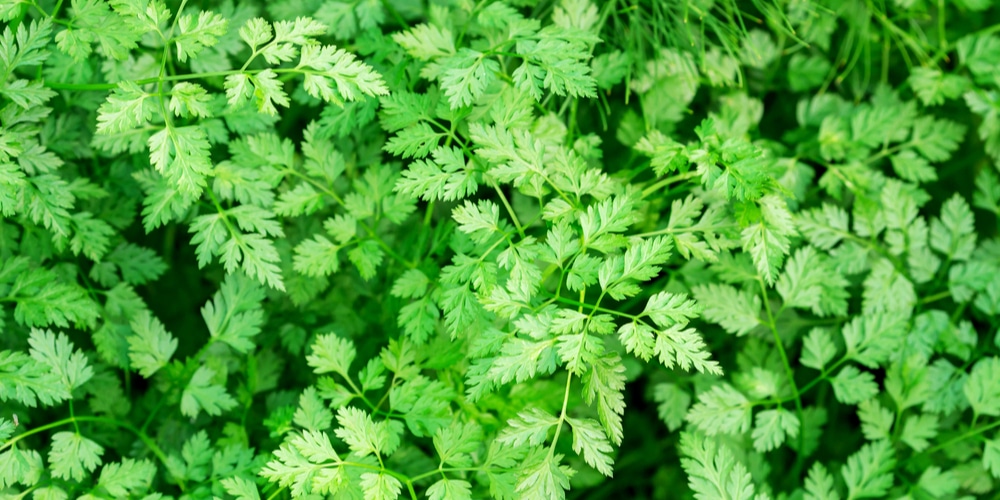Many plants, such as poison hemlock, sweet cicely, and common ragweed, are similar to ferns in appearance. These plants have fronds divided into small leaflets and grow in moist, shady areas. However, these plants are not actually ferns; they are members of different plant families. Let’s look at the most common species of fern like weeds.
Fern like weeds
- Poison Hemlock (Conium Maculatum)
- Sweet Cicely (Myrrhis Odorata)
- Common Ragweed (Ambrosia Artemisiifolia)
- Cow Parsley (Anthriscus Sylvestris)
- Turnip-Rooted Chervil (Chaerophyllum Bulbosum)
Poison Hemlock
Poison Hemlock (Conium Maculatum) is a member of the Apiaceae family, which also includes wild carrots. The plant is native to Europe but can be found in many other countries, including the States.
Poison hemlock is fast-growing and can grow between six and ten feet tall. It has large, umbrella-like flowers. The leaves of poison hemlock are divided into small leaflets, and they have a fern-like appearance. However, this plant is poisonous, and it should not be consumed by humans, pets, or livestock. It can also cause skin irritation if the plant is touched.
Sweet Cicely
Sweet cicely (Myrrhis Odorata) is also a member of the Apiaceae family, and it is native to Europe and Asia. This plant can grow up to three feet tall and has small, white flowers that grow in clusters.
The leaves of sweet cicely are light green and have a fern-like appearance. When crushed, the foliage and flowers have an aniseed like smell.
Common Ragweed
Common ragweed (Ambrosia artemisiifolia) is a very common weed that grows in yards, farms, and wastelands. It’s a member of the Asteraceae botanical family and native to North America. This annual plant likes to grow in tropical and subtropical climates and can become invasive in warmer areas as it spreads via rhizomes.
Common ragweed can grow to be about 2 to 4 feet tall, and it has small, green flowers that bloom in the summertime. The leaves of the plant are opposite each other on the stem, and they are serrated with small teeth.
Cow Parsley
Cow parsley (Anthriscus Sylvestris) can grow rapidly and can be difficult to control. This plant can cause an allergic reaction in some people, and it is the main source of hay fever symptoms in the United States.
Cow parsley is also known to be poisonous to animals, so care should be taken if you have livestock. This plant is native to Europe and Asia, but it has been introduced to North America.
Cow parsley can be found in pastures, meadows, and roadsides. It looks very similar to hemlock and has fern like leaves.
Turnip-Rooted Chervil
This plant is related to the common turnip, but it has a much more slender root. The leaves of this plant are used as an herb, and they have a mild anise flavor. This plant is native to Europe, but it has been introduced to North America and can be found in some gardens.
The weed has fern like leaves and white flowers that produce small black seeds. The roots of this plant can be roasted and eaten like turnips. This plant is considered to be a weed by some gardeners, but it is edible and has some culinary uses.
Conclusion
Fern like weeds can be challenging to control, but some of them are edible and have culinary uses. It is essential to be aware of the potential dangers of these plants, as some of them can cause allergic reactions or may be poisonous to humans and animals. It is best to consult with a professional if you have any concerns.
